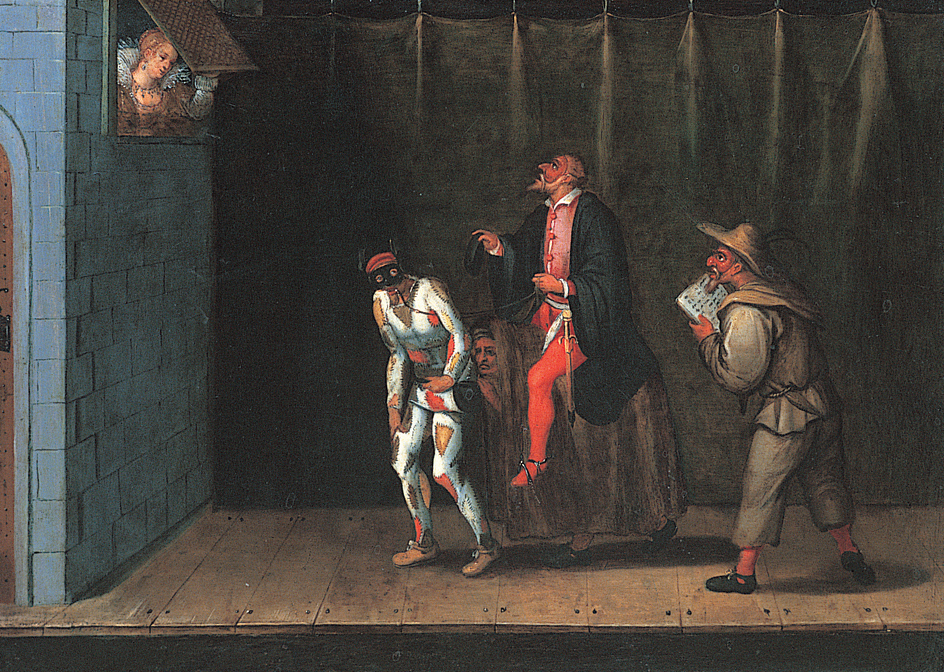Commedia dell’ arte, << kuh MAY dee uh dehl AHR tee, >> was the name given to a boisterous type of theater during the Italian Renaissance, in which the actors improvised (made up) the dialogue as they went along. Commedia was a truly popular form in Italian, as opposed to the literary drama of the court and academies. Commedia was performed by professional actors who worked as easily on simple platforms in a market square as they did on elaborate court stages.

The commedia script consisted of a scenario (outline of the basic plot) and stock characters, including Pantaloon (a foolish old man) and his daughter Columbine, who is in love with mischievous Harlequin. In each company, the same actor always played the same role. Most of the lively, farcical plots dealt with love affairs, but the main interest lay in the comic characters. These characters included cunning servants called the Zanni, such as Scapino, Pulcinella, and Arlecchino.
Scholars do not know how commedia originated, but by 1575, the companies that performed it had become extremely popular in Italy. Commedia soon was appearing throughout Europe. It remained a vigorous force in drama until the mid-1600’s and continued to be performed until the end of the 1700’s. Commedia had an important influence on much of the comedy written during the 1600’s, and its influence can even be seen in the work of the Italian playwright Dario Fo in the 1900’s. The English pantomime owes its origins in part to commedia. See also Renaissance.
